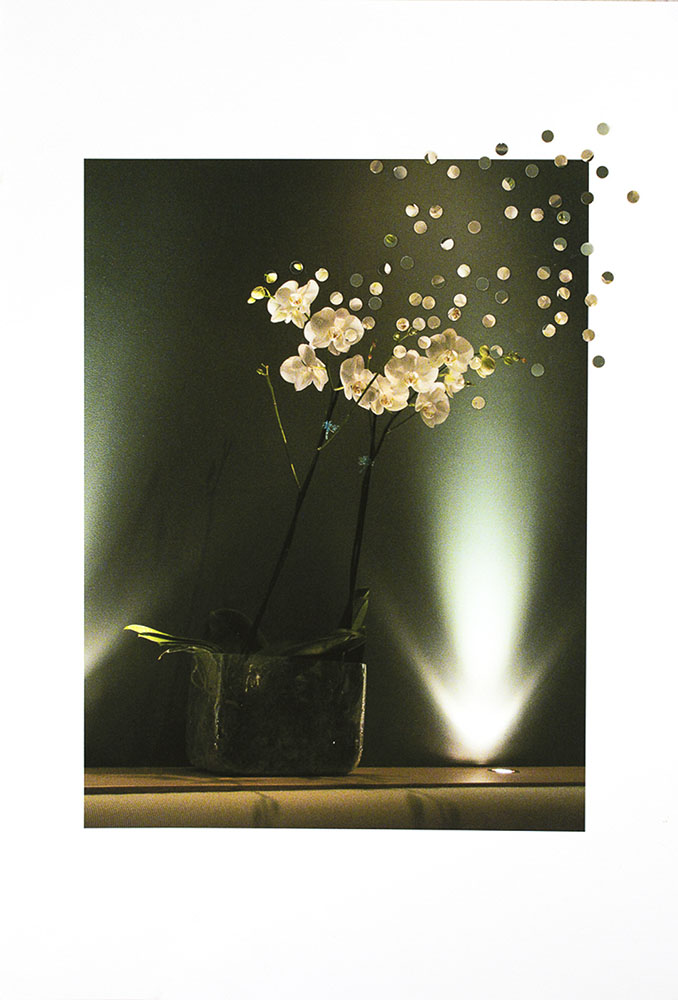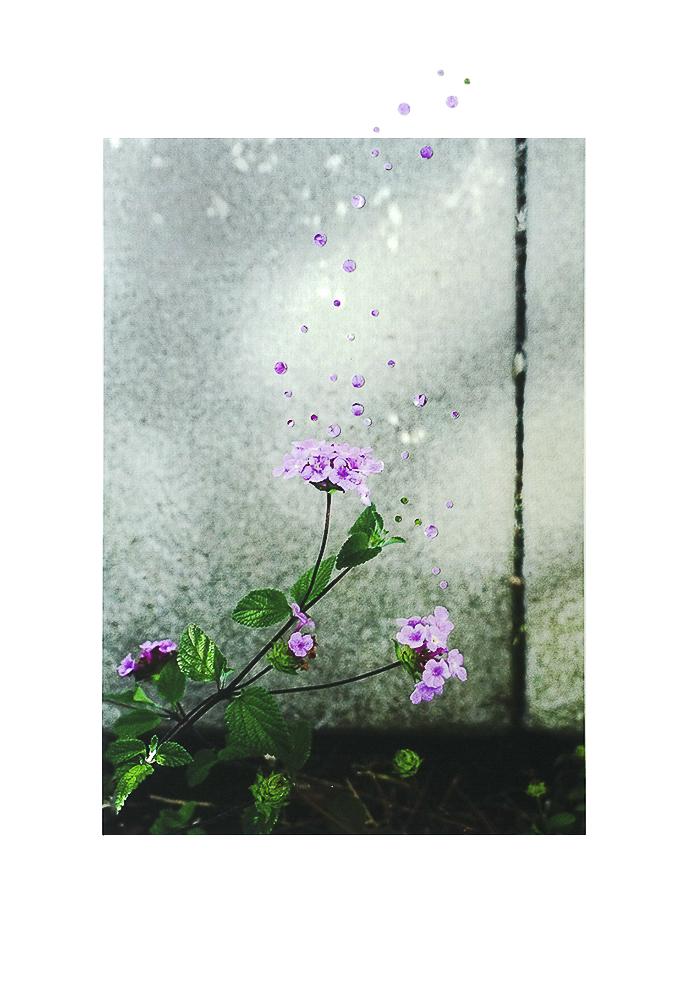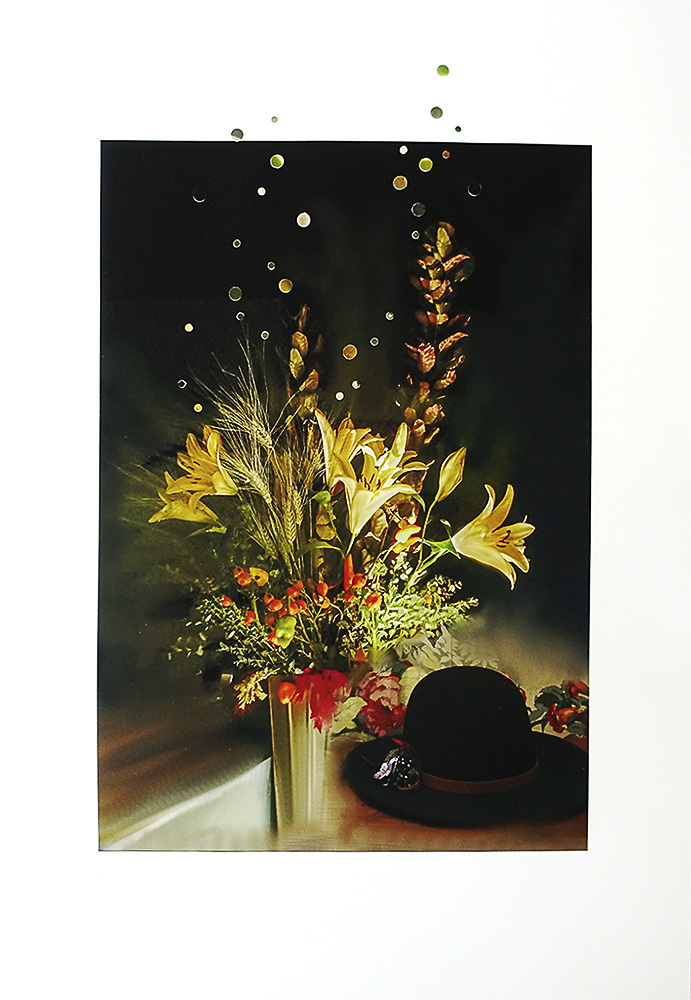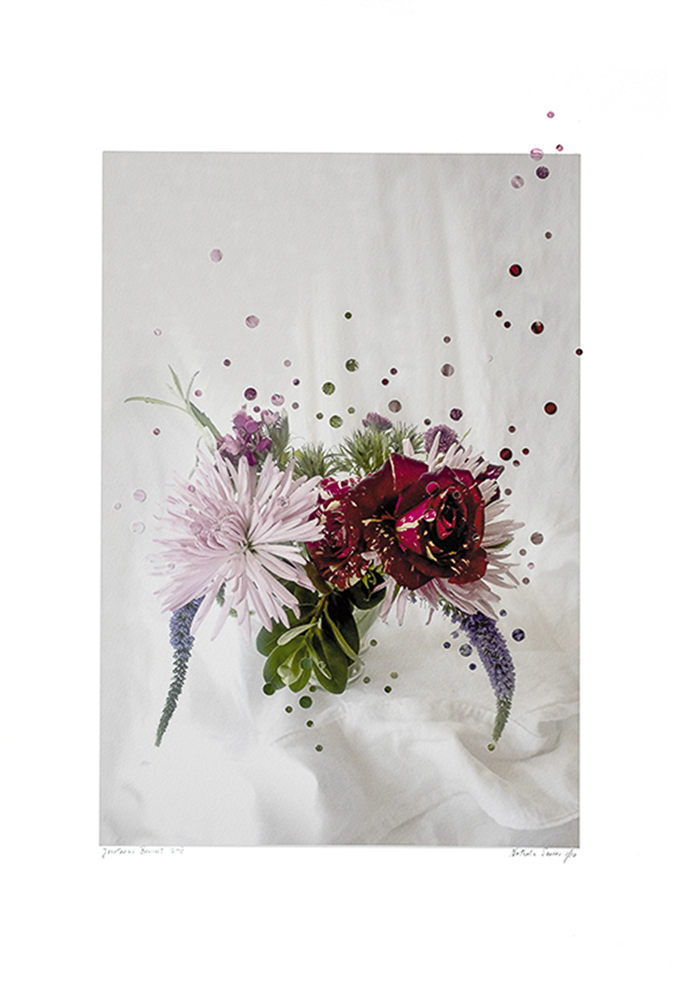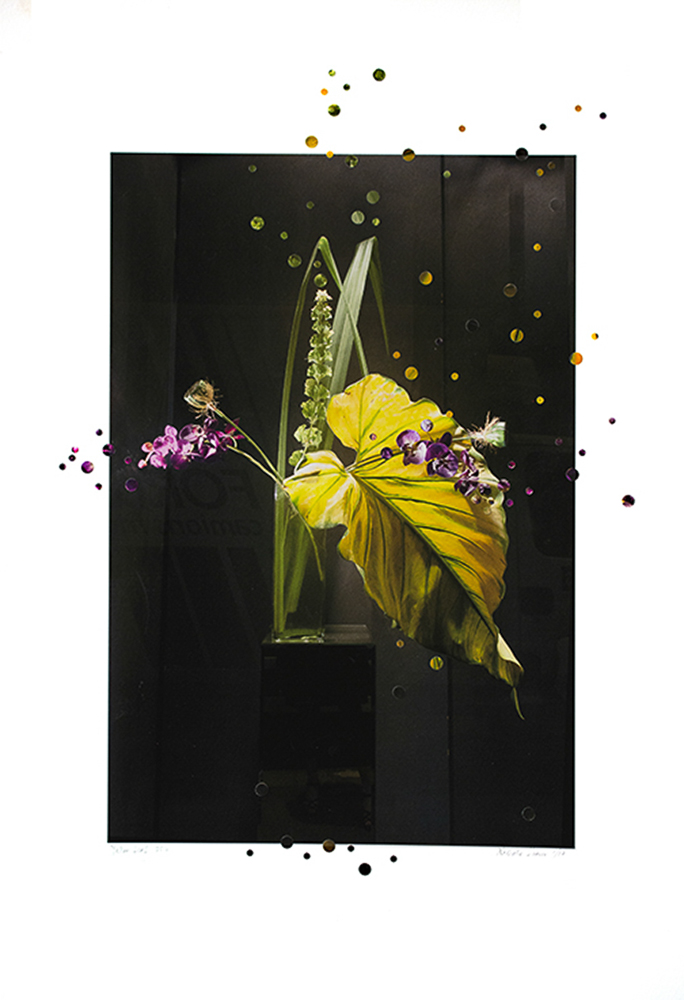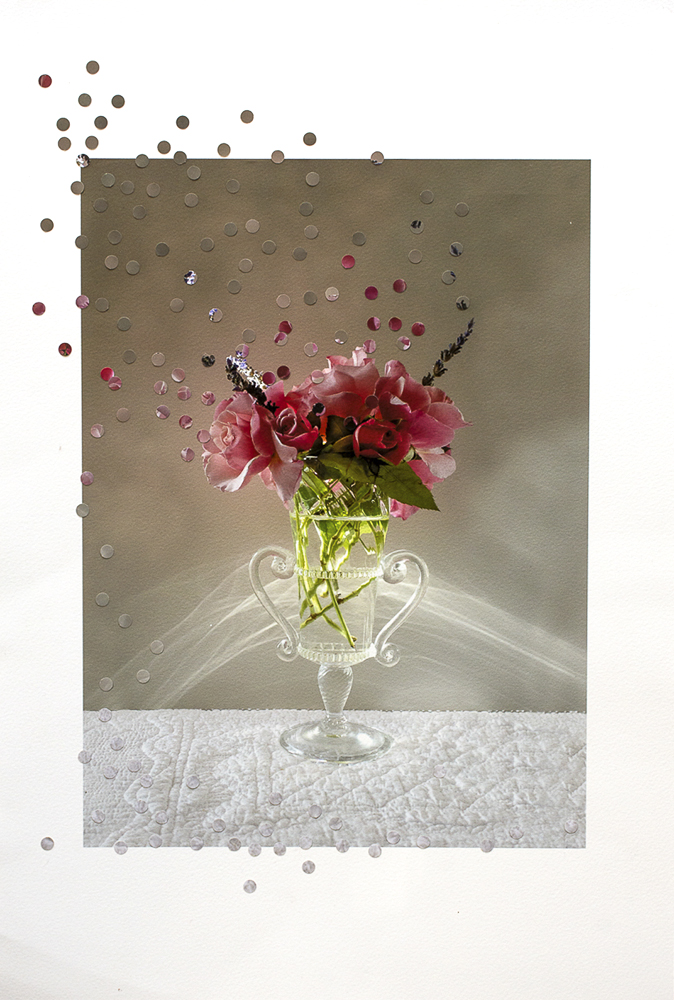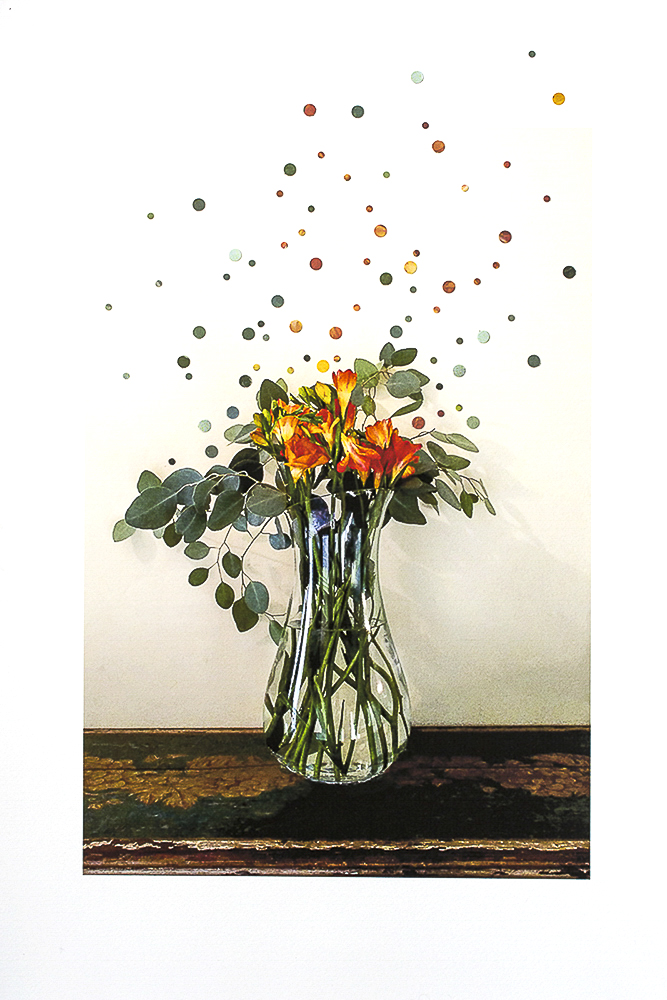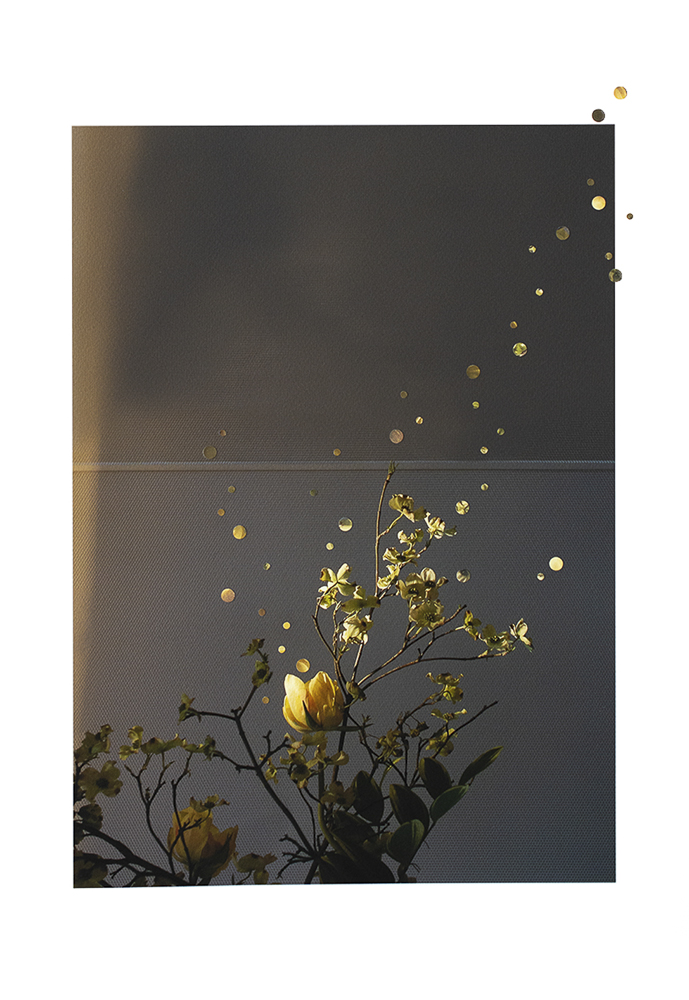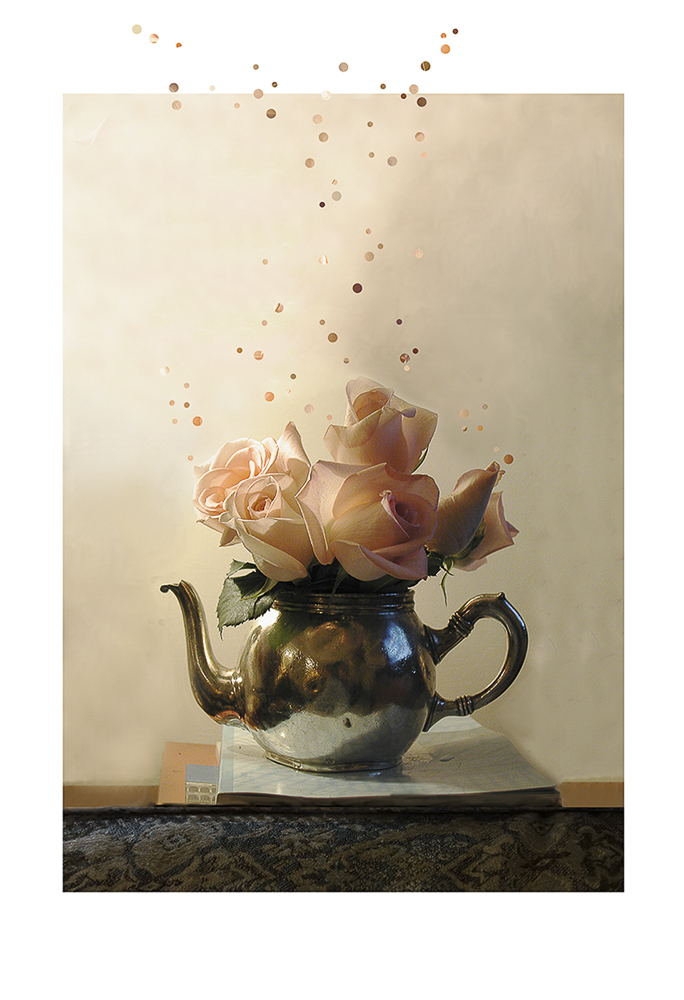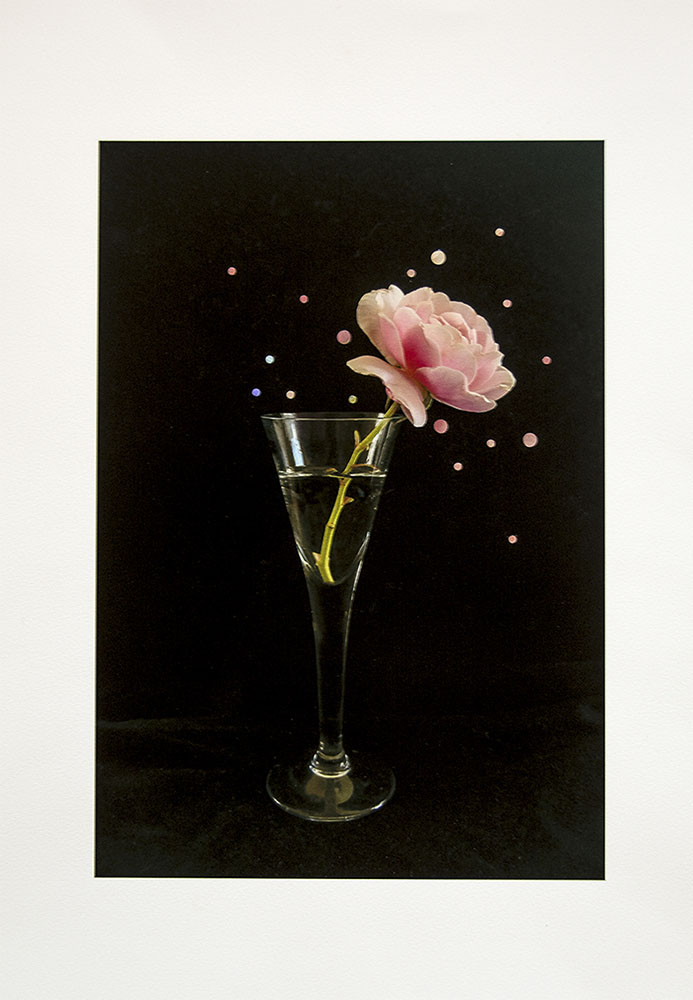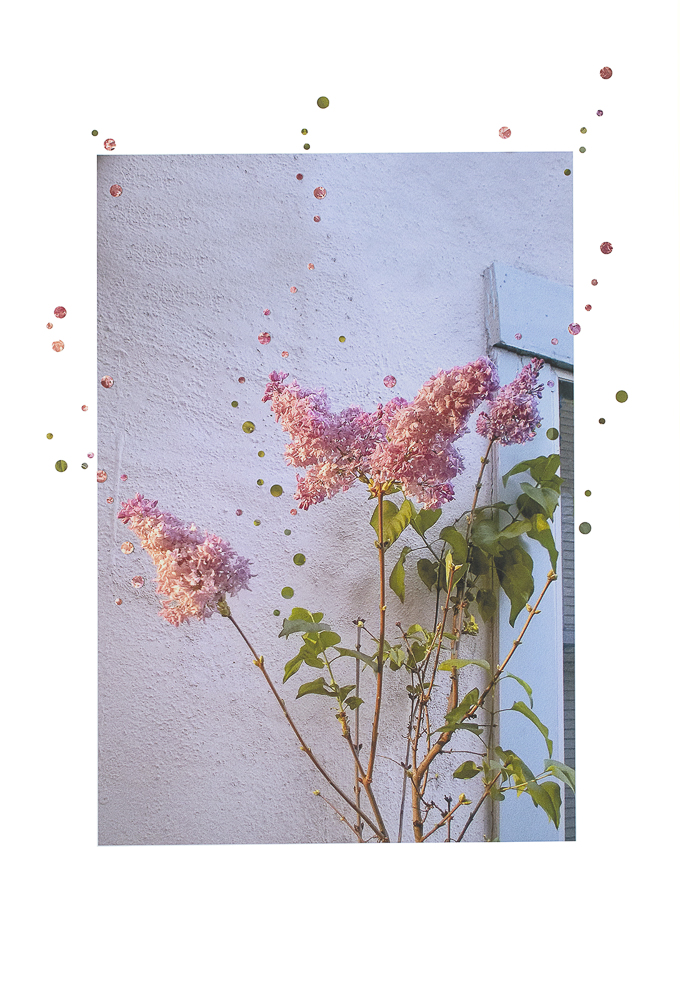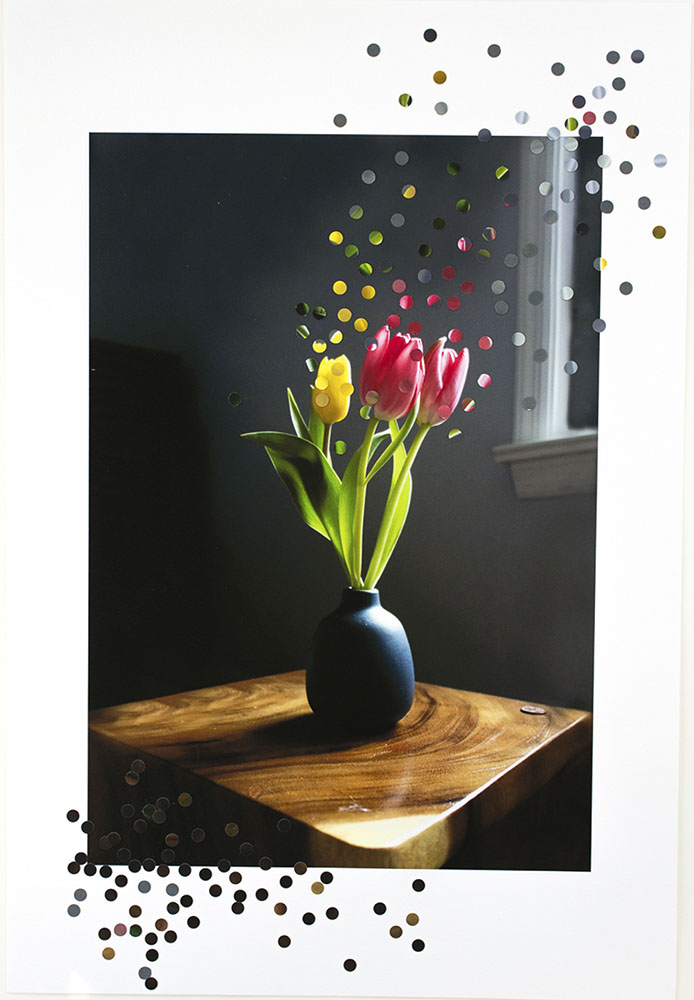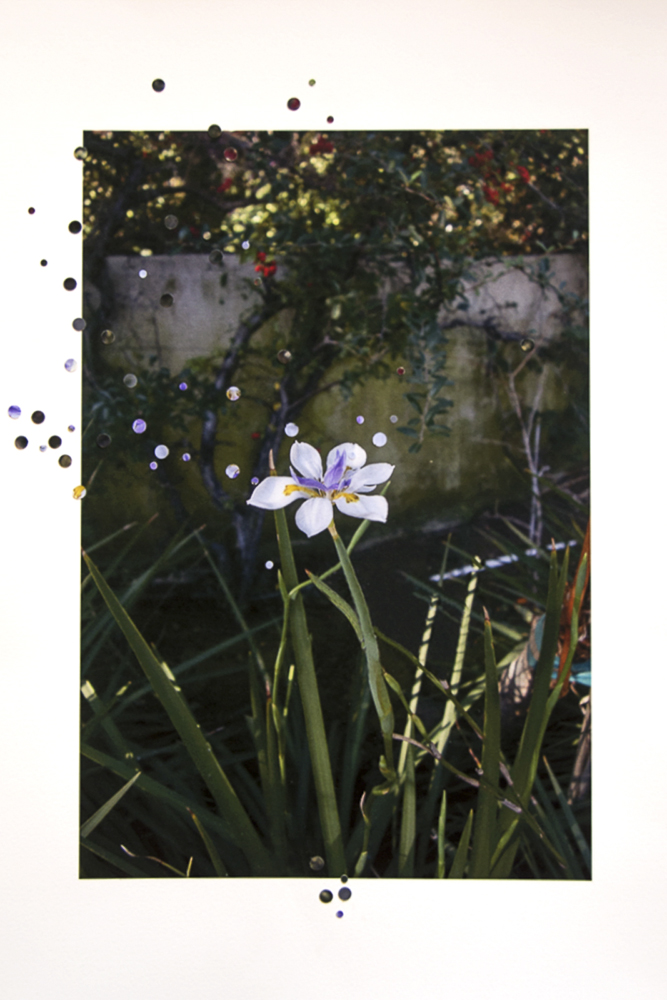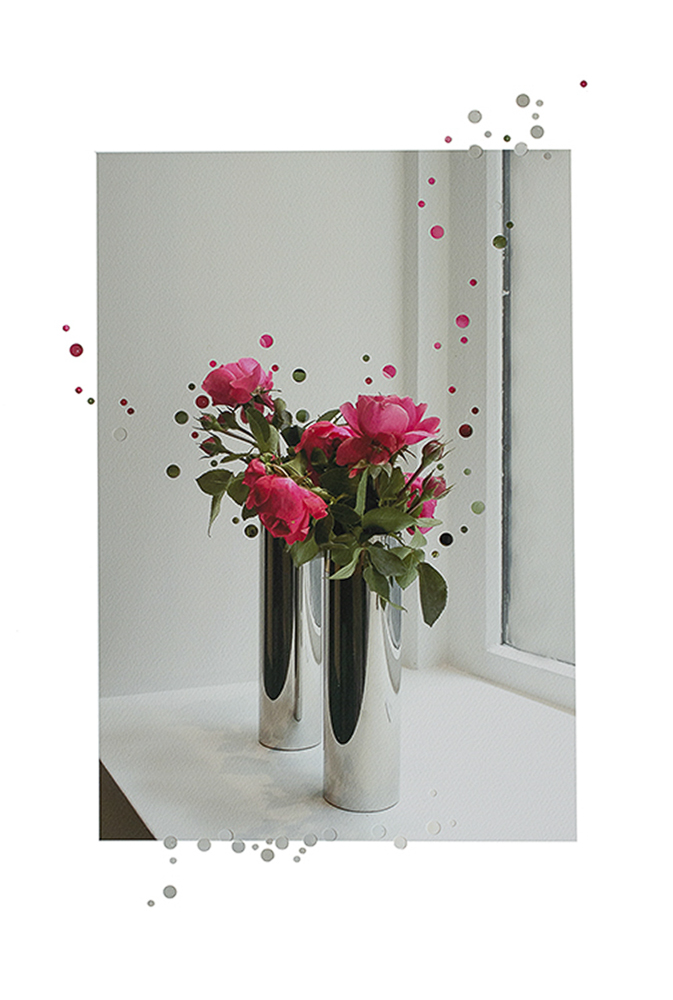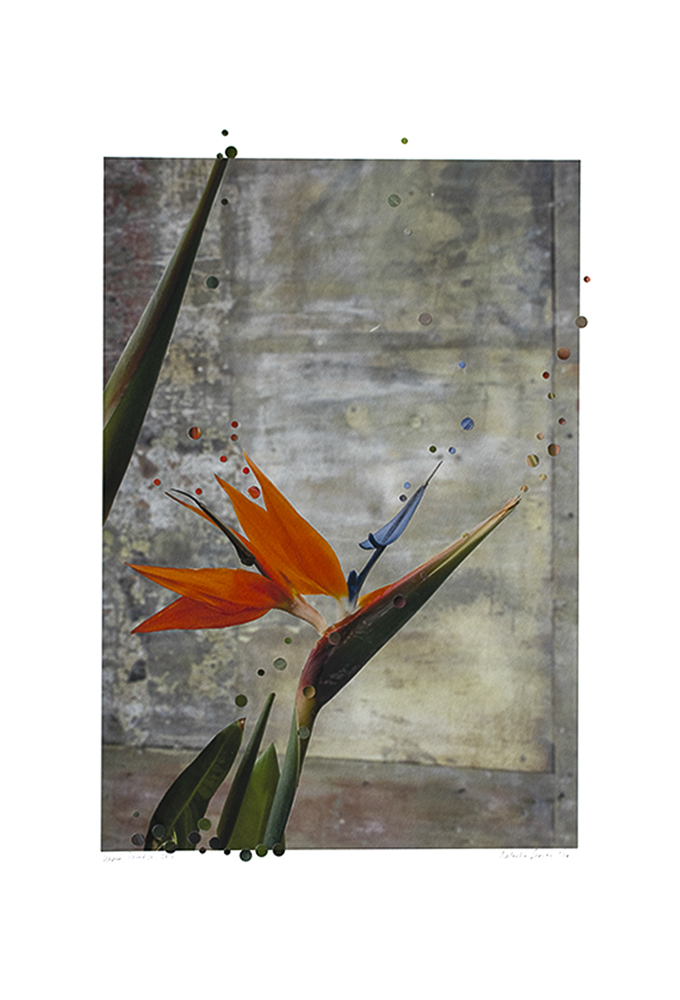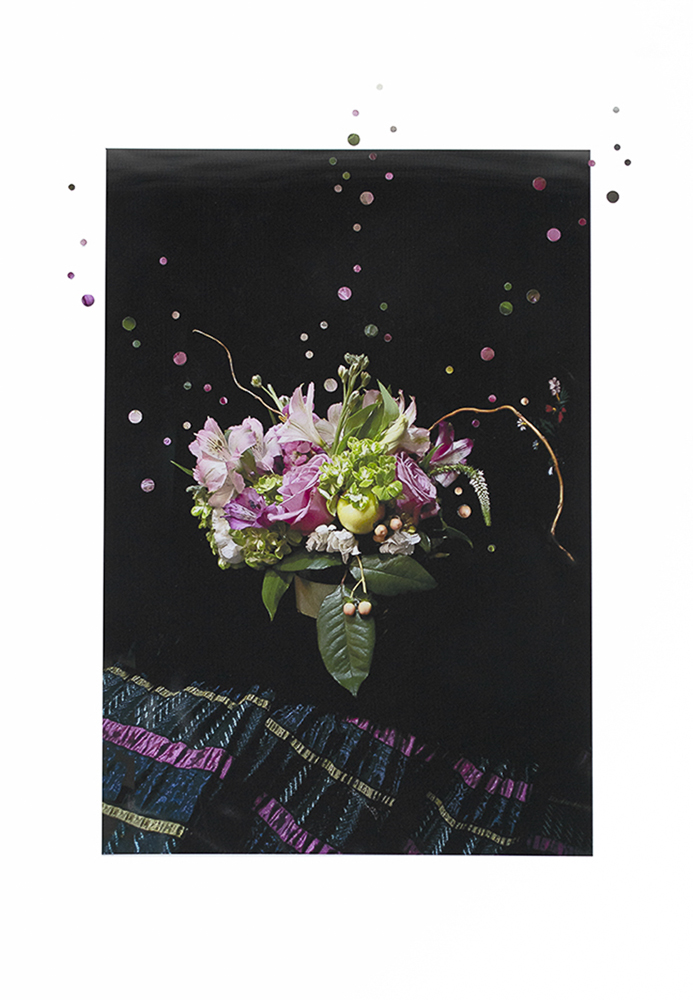Nathalie Seaver: Deconstructing Beauty
Projects featured this week were selected from our most recent call-for-submissions. I was able to interview each of these individuals to gain further insight into the bodies of work they shared. Today, we are looking at the series Deconstructing Beauty, by Nathalie Seaver.
Deconstructing Beauty
“I frequently hear music in the very heart of noise”- George Gershwin
This notion sparks a visual interpretation for me, as I seek to discover beauty, hidden in the chaos of the ordinary.
The Deconstructing Beauty series explores the visual capture of an artistic instant of harmony which creates a piece of art, using collage and painting techniques.
While I’m drawn to things that are beautiful, it’s magic that is at the core of my art making. In this series, I explore the language of contemporary photographs: the pixel, through the timeless subject of the natural world. Transforming a pixel into a feminine shape: a circle, I expand beyond a beautiful object into a new incarnation of magic. This collaged act of adding to the photograph by hand is a reaction to the lack of materiality of photographs on a screen and a celebration to intensify the photographic object into a new way of experiencing beauty.
Daniel George: You write that your series explores beauty in the chaos of the ordinary. Your images seem to create a sort of visual chaos from subjects that are otherwise simple—opting for maximal rather than minimal. What is your intention with these additions?
Nathalie Seaver: It’s always interesting to me to learn how people can perceive art so differently. First, I’d like to address the maximal vs. minimal question. I would definitely not call myself a minimalist. I will say this, however: when I first began to experiment with the dots on an image, I was so energized with the process, that I did it with complete abandon. The first few finished pieces were very “full”. As I proceeded, I not only began using 2 different sized dots, but I chose to be far more restrained in their application. To paraphrase a famous saying by Coco Chanel: Take a second look and remove something.
My intention with this series, is to isolate something beautiful — in this case, flowers and then layer a visualization of an instant of inspiration. The idea is to present that unseeable, “aha” moment for an artist. You cannot “see” music but it still exists and is translated visually, to dots on paper. I utilize the dot patterns, to represent both the inherent beauty of the flower, as well as portraying visually, the effervescence of that magical moment of inspiration for an artist, which isn’t always something that is explainable but nevertheless exists.
DG: Your application and arrangement of circular shapes reminds me, in a way, of pollen being discharged from a flower—causing me to think on modes of communication in the digital age. Tell me more about your interest in using these “pixels” to explore the language of contemporary photography.
NS: Funny that you should bring this up! As I built this series, I studied dot patterns in nature, to learn the organic, harmonious possibilities of the dot placements for my images. I looked at all sorts of natural scatters and splatters: Rain drops on a car window. Tiny bubbles forming overnight, inside a decanter of water, paint spots on a drop cloth, etc. Whether they were indoors or outdoors, I began to realize there was an elegance to all of these patterns and I referenced their graceful spacing and arcs, hoping to emulate them in my application of the dot components on my images. I ended up with a collection of those natural dot patterns and created a “sidebar” grid of 16 photos, to show the natural world origins of the dot pathways for the series when I had my solo show, and I even sold some pieces from that separate, research group! I’ve attached a few examples, as well as the grid, assembled on the gallery wall.
The series began one morning when I had to look at one section of an image and when I blew it up, my screen was like a patchwork quilt of squares. We know about pixels, of course, but to see that one photo, built entirely by these colored squares, made me stop and think about shapes. If square pixels represented the digital image, that we often only see on a screen – what would the opposite shape be? I immediately thought of a circle. I ended up having a little conversation with myself — why not consider another opposite? Rather than a swipe-able image, gone in an instant, why not create an image in a slow process? Make a collage, something in 3D, something tactile, more permanent?
DG: How has your experience with different mediums and work environments informed this particular project? How would you say it has been enhanced?
NS: As a clothing designer, I’ve had the opportunity to create textile patterns for my collections. Proportion, color and spacing are key elements to that design-work and I believe that experience probably informs how I approach my process with the photo-collages.
I chose flowers for this series, as they represent purity and beauty in nature. I opted to create these images in many different environments because in each instance, there was something magical about the light, the color, the setting that spoke to me in the moment, whether in a garden, passing by a street as a bouquet or composed as a still life in my studio.
DG: How would you characterize the magic of your art-making process, which you mention in your artist statement?
NS: Many people practice yoga or meditate everyday, to achieve that state of Flow and create balance and inner clarity for themselves. I take another route to get to that same end — I make art, everyday. Sometimes I shoot, sometimes I work with images I’ve already banked or dive into the collage work. And, as has been well documented, in that Flow state, time seems to stop, or slow down. For me, the dot patterns represent a visual of that nano second of Flow, like one frame of a moving picture. Flow is magical.
Nathalie Seaver grew up in Manhattan and Paris and currently lives in Los Angeles. Her practice uses photography, collage, textiles and mixed media to investigate materiality, memory, and the complexity and beauty found in worlds within her reach. Her art is enhanced and informed by a lifetime of working in visual and tactile environments: book illustration, TV, film and fashion design. Houston gallerist, Catherine Couturier awarded Nathalie 1st prize and a solo show at the 2018 LACP member competition. Her photographic collages have been included in numerous exhibitions, including the A Smith Gallery and featured in The Hand Magazine and her work was recently featured in the KlompChing Gallery Fresh 2019 Summer Exhibition, as one of five Honorable Mention artists.
Deconstructing Beauty will be exhibited with Fabrik Projects Gallery at Foto Fever in Paris from Nov 7-10, 2019.
Posts on Lenscratch may not be reproduced without the permission of the Lenscratch staff and the photographer.
Recommended
-
Salua Ares: Absense as FormNovember 29th, 2025
-
Ricardo Miguel Hernández: When the memory turns to dust and Beyond PainNovember 28th, 2025
-
Pamela Landau Connolly: Columbus DriveNovember 26th, 2025
-
KELIY ANDERSON-STALEY: Wilderness No longer at the Edge of ThingsNovember 19th, 2025
-
Jackie Mulder: Thought TrailsNovember 18th, 2025


